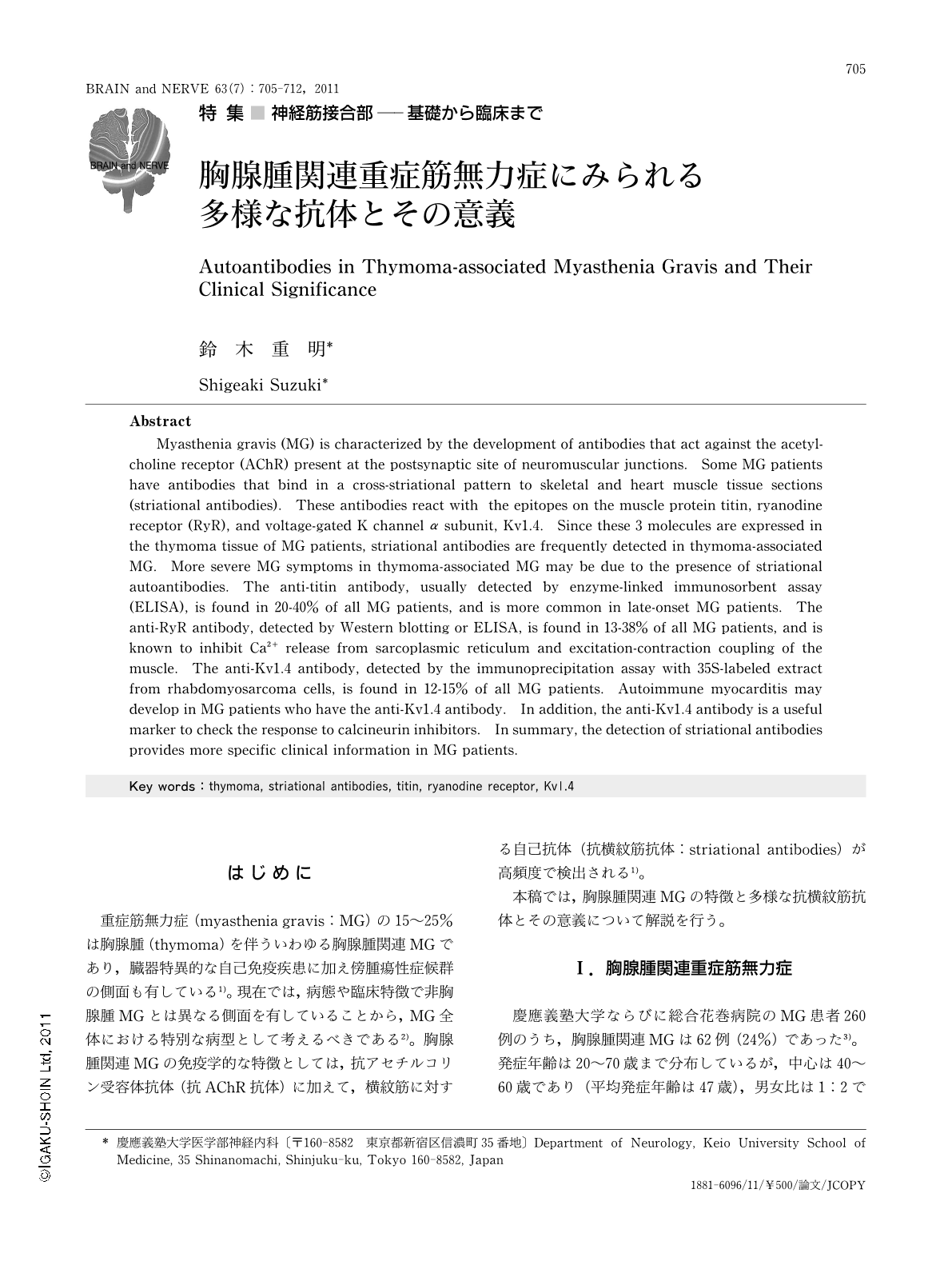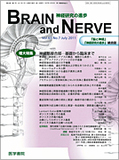Japanese
English
- 有料閲覧
- Abstract 文献概要
- 1ページ目 Look Inside
- 参考文献 Reference
はじめに
重症筋無力症(myasthenia gravis:MG)の15~25%は胸腺腫(thymoma)を伴ういわゆる胸腺腫関連MGであり,臓器特異的な自己免疫疾患に加え傍腫瘍性症候群の側面も有している1)。現在では,病態や臨床特徴で非胸腺腫MGとは異なる側面を有していることから,MG全体における特別な病型として考えるべきである2)。胸腺腫関連MGの免疫学的な特徴としては,抗アセチルコリン受容体抗体(抗AChR抗体)に加えて,横紋筋に対する自己抗体(抗横紋筋抗体:striational antibodies)が高頻度で検出される1)。
本稿では,胸腺腫関連MGの特徴と多様な抗横紋筋抗体とその意義について解説を行う。
Abstract
Myasthenia gravis (MG) is characterized by the development of antibodies that act against the acetylcholine receptor (AChR) present at the postsynaptic site of neuromuscular junctions. Some MG patients have antibodies that bind in a cross-striational pattern to skeletal and heart muscle tissue sections (striational antibodies). These antibodies react with the epitopes on the muscle protein titin,ryanodine receptor (RyR),and voltage-gated K channel α subunit,Kv1.4. Since these 3 molecules are expressed in the thymoma tissue of MG patients,striational antibodies are frequently detected in thymoma-associated MG. More severe MG symptoms in thymoma-associated MG may be due to the presence of striational autoantibodies. The anti-titin antibody,usually detected by enzyme-linked immunosorbent assay (ELISA),is found in 20-40% of all MG patients,and is more common in late-onset MG patients. The anti-RyR antibody,detected by Western blotting or ELISA,is found in 13-38% of all MG patients,and is known to inhibit Ca2+ release from sarcoplasmic reticulum and excitation-contraction coupling of the muscle. The anti-Kv1.4 antibody,detected by the immunoprecipitation assay with 35S-labeled extract from rhabdomyosarcoma cells,is found in 12-15% of all MG patients. Autoimmune myocarditis may develop in MG patients who have the anti-Kv1.4 antibody. In addition,the anti-Kv1.4 antibody is a useful marker to check the response to calcineurin inhibitors. In summary,the detection of striational antibodies provides more specific clinical information in MG patients.

Copyright © 2011, Igaku-Shoin Ltd. All rights reserved.


